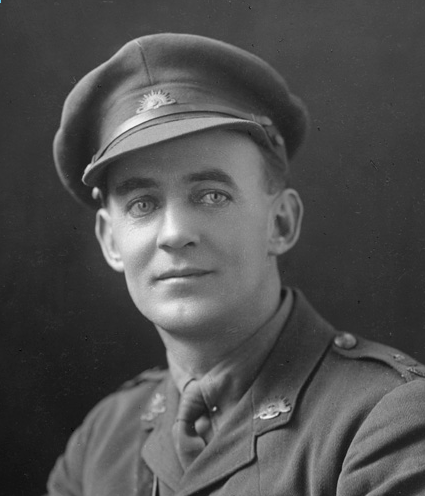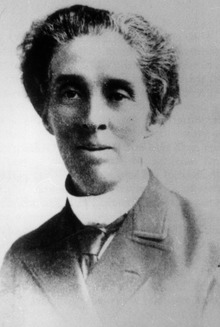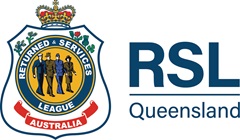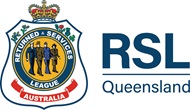
Our forgotten volunteers
18 May 2019- History & commemoration
The little known story of the 1,500 Australians and New Zealanders who served in Serbia during WWI.
By Bojan Pajic
Australian and New Zealand volunteers were already in Serbia, treating wounded Serbian soldiers and fighting a typhus epidemic, before the ANZACs landed at Gallipoli in 1915. Soon after Austria-Hungary invaded Serbia in August 1914, voluntary and government organisations in Britain and other Allied countries organised medical assistance for Serbia.
Among the volunteers were Australian and New Zealand doctors, nurses, orderlies, ambulance drivers and others. They joined organisations such as the Red Cross, the Serbian Relief Fund, the Scottish Women’s Hospitals and Wounded Allied Relief.

Captain William Trew, from Victoria, led a unit of 22nd and 24th AIF Battalion drivers in an advance into Serbia with the British 10th Division in late 1915.
The Serbs beat back three Austro-Hungarian invasions in 1914, but at the beginning of 1915, a typhus epidemic swept the war-torn country killing around 140,000 people.
Later in 1915, the Gallipoli campaign sealed Serbia’s fate, as Germany, Austria-Hungary and Bulgaria moved to secure a land supply corridor to Turkey through Serbia. The German-led invasion forced the Serbian Army, government and civilians to withdraw south towards French and British troops landing in the port of Salonika to link up with the Serbian Army.
However, the Allied help was too little too late, and the link between the Serbian Army fighting off the invaders in Serbia and the Allied French and British forces based on the port of Salonika could not be made. Rather than surrender, the Serbian Army, government and thousands of civilians chose to fight their way out of encirclement and withdraw through the wintry mountains of Montenegro and Albania to the Adriatic coast in order to be able to continue to fight again alongside the Allies.
Australians caught up in the tragedy
Australians and New Zealanders were caught up in this tragedy; some withdrew with the Serbian Army out of Serbia and others stayed with their Serbian wounded patients and were captured. The withdrawal of the Serbian Army in winter across the mountains was one of history’s epic marches. Thousands died from fighting, famine, exposure and exhaustion.
After recuperating on the island of Corfu, the Serbian Army was transferred by the Allies to the port of Salonika (today’s Thessaloniki in northern Greece) where it – together with French, British and Russian forces – confronted the Central Powers armies of Germany, Austria-Hungary, Bulgaria and Ottoman Turkey.
Australians and New Zealanders were sent to the Salonika (or ‘Serbian’, ‘Macedonian’ or ‘Balkan’) Front to serve alongside the Serbian Army.
Some were with the British Army and Royal Flying Corps; others were in two AIF units that served there in a forgotten campaign.
Around 380 Australian Nurses served
One of the AIF units, drivers from the 6th Australian Infantry Brigade, accompanied the British 10th Division into Serbia and fought in a battle there with invading Bulgarian forces. Some 380 Australian Army Nursing Corps nurses served on that campaign, as did around 400 crew of six Australian torpedo boat destroyers supporting the campaign in the Adriatic, Aegean and Mediterranean Seas.
Other Australians and New Zealanders served there with New Zealand and British Army medical services.
A volunteer hospital of the Scottish Women’s Hospitals was sent to support the Serbian Army on the Salonika Front in 1916. This unit was led by two Australian women doctors and had other Australian and New Zealand doctors, nurses, ambulance drivers and orderlies as staff.
The author Miles Franklin was a medical orderly supporting the Serbian Army; her little-known memoir of her experiences with the Serbian Army is quoted extensively in this book.
Another Australian volunteer, Olive King, from Sydney, served first as an ambulance driver with a unit of the Scottish Women’s Hospitals and then joined the Serbian Army as an ambulance driver. She was decorated for bravery by the Serbian Government.
The Salonika campaign started with Allied landings to assist Serbia and then, with the arrival of the Serbian Army, it became a campaign to liberate Serbia and defeat the Central Powers facing the Allies on that front. The Serbian Army recaptured part of its territory in a series of battles in late 1916, supported by the Australian- led Scottish Women’s Hospital and by hundreds of Australians and New Zealanders with two AIF units, a New Zealand Army Hospital and with British forces there.
In 1918, the Serbian Army and Allied French, British, Italian and Greek forces broke through the enemy lines and advanced into Serbia. Bulgaria sued for peace, followed by Austria- Hungary and Ottoman Turkey.
Germany agrees to an Armistice
Germany was now unable to plug the gap opened up by the fall of its allies and prevent an Allied invasion from Serbia and occupied Austria-Hungary into Germany itself. It too agreed to an armistice, thus ending WWI.
So far, 1500 Australians and New Zealanders have been identified as serving on this little-known, yet crucial battlefront. Some died in action, others from disease.
Now, for the first time, we have an engaging and comprehensive account of what they experienced and achieved in the Great War. Many of these Australians and New Zealanders are profiled in the book.
During and after the war, Serbia decorated some 150 Australian and New Zealand soldiers, airmen, medical volunteers and humanitarian aid givers. The book names the recipients and provides descriptions of these rare Serbian awards.
A DECORATED BRISBANITE: LILIAN VIOLET COOPER
Medical officer and surgeon Lilian Violet Cooper (1861-1947) was one of those decorated by Serbia for her service during WWI. Lilian, who served with the Scottish Women’s Hospital’s ‘America’ unit in support of the Serbian Army in 1916-17, was awarded the Serbian Order of St Sava Class IV.
Lilian performed war surgery at the hospital site on Lake Ostrovo and also at advanced dressing stations closer to the front lines. Her patients were wounded Serbian soldiers from the Battles of Gornicevo, Kajmakcalan and Monastir (Bitola). She was an older and experienced member of the medical staff, much appreciated by Dr Agnes Bennett, the Australian commander of the ‘America’ unit.

Born in England, Lilian was educated privately and then studied at the London School of Medicine for Women in 1890. In 1891, she moved to Brisbane with her life companion Mary Josephine Bedford. The pair joined the Scottish Women’s Hospital when the war broke out and worked in Serbia and Macedonia from 1916-1917. After the war, Lilian returned to Brisbane and led a successful private practice. She retired in 1941 and died at home in 1947.
Josephine Bedford, who inherited most of her estate, later gave the property at Kangaroo Point in Brisbane to the Sisters of Charity, the Mount Olivet Hospital, where a part of the hospital was named ‘the Lilian Cooper Nursing Home’. St Mary’s Church of England in Kangaroo Point has Lilian’s Serbian Royal Order of St Sava on display.
ABOUT THE AUTHOR
Bojan Pajic majored in history at the University of Adelaide, SA, and served as an infantry officer in the Citizen’s Military Forces/Army Reserve. He served overseas as an Australian Trade Commissioner, a senior manager in the food manufacturing industry, and as managing director of an information technology company.
Bojan’s grandfather and great uncle were officers in the Serbian Army in WWI. He is also the author of Serbian Decorations through History and Serbian Medals Awarded to Australians.
Loading

